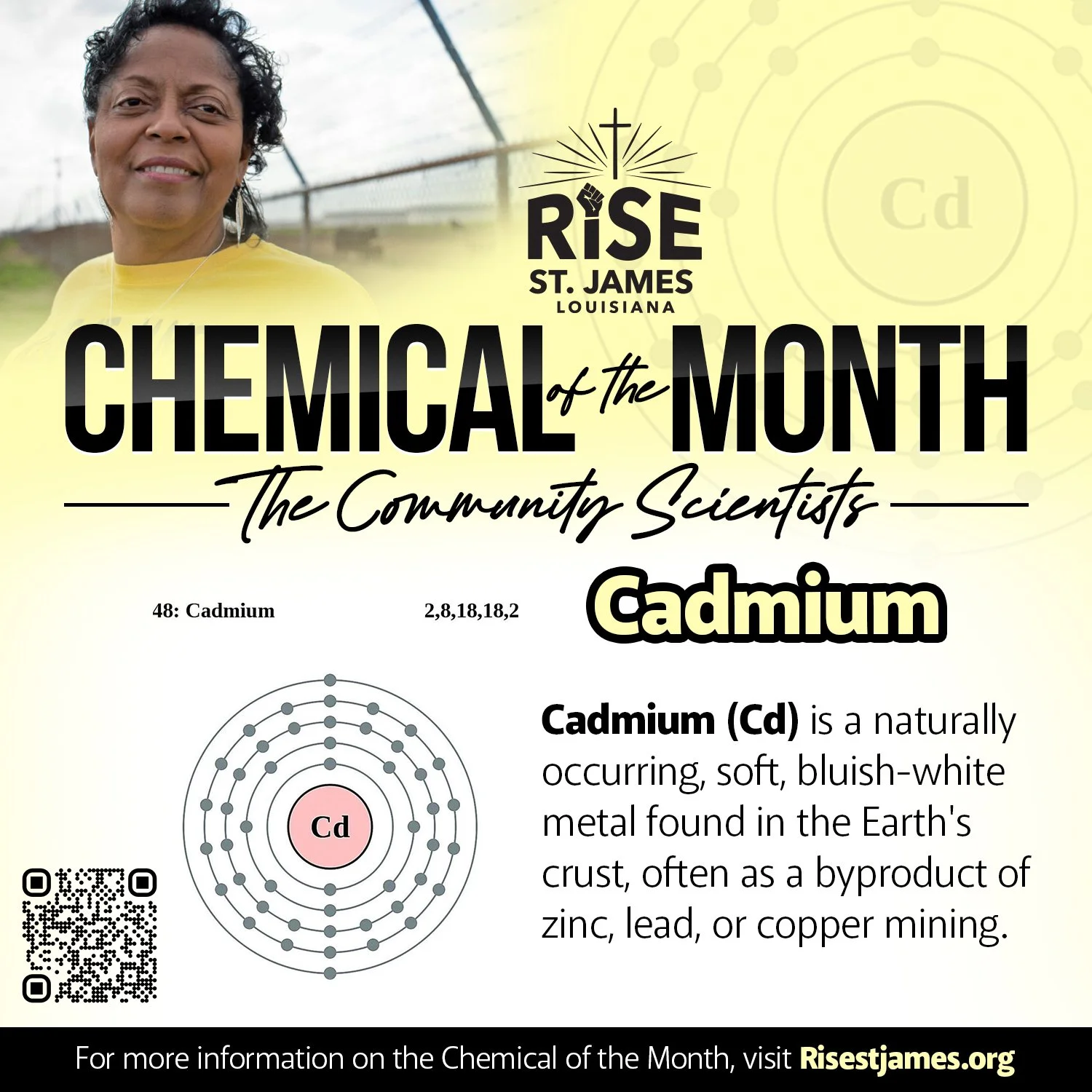By Caitlion O. Hunter, Esq.
A service program of RISE St. James; Caitlion O. Hunter, Esq.; Tim Schütz, PhD Researcher, Anthropology University of California, Irvine; and The Community Scientist (TCS) Research Team
What does a plastic-free future look like? Some people are old enough to remember a time before single use plastic bottles, bags, wraps, and containers were in use. But does replacing single use plastic with glass, paper, clay, or husks make sense? Should you keep using your old plastic items or purchase new products? This year, we at RISE St. James Louisiana will be sharing solutions and ideas about what the post-plastic era looks like- and no, it’s not recycled plastics.
One of the most commonly used plastics worldwide is polyvinyl chloride, or PVC. Louisiana is a hotspot for PVC plastic production- there are at least six plants throughout the state that produce vinyl chloride or PVC resin. Cadmium was historically used as a stabilizer in PVC plastic. Cadmium is a heavy metal that serves no known purpose in the human body, and is toxic at any dose. Although cadmium is now banned as an additive to plastic manufactured in the USA, and several states ban the sale of cadmium-containing PVC, reports consistently find cadmium in PVC products imported from China, especially flexible PVC used as packaging. Our current labeling laws do not require the disclosure of where packaging is made, so it is nearly impossible for a shopper to know if a product’s packaging is safe.
The most common industrial use for cadmium is in batteries, although these are mostly phased out. Cadmium can also be used in red, orange, and yellow dyes. Zinc mining is a major source of cadmium contamination of water and soil, as cadmium generally is found in zinc deposits. Cadmium is also a contaminant and waste product of phosphogypsum mining, and the process water in the waste pits at Mosaic Uncle Sam contains levels of cadmium as high as 7.76 mg/Kg, or over 1500 times the safe drinking water limit. Cadmium enters into the water table through mining activities, leaks from landfills that contain cadmium batteries and old PVC, and runoff from cadmium-contaminated phosphate fertilizers. Tobacco plants concentrate cadmium in the soil where contaminated phosphate fertilizer has been used, and inhaling cigarette smoke causes that cadmium in the tobacco to enter the lungs. Smokers typically have blood cadmium levels double that of non-smokers.
Cadmium is a special concern for Louisiana because rice easily absorbs cadmium from contaminated soils. The link between cadmium exposure and cancer, especially lung, prostate, kidney, and pancreatic cancer, is well established. A study looked at South Louisiana’s high pancreatic cancer rates and found that eating very large quantities of rice, pork, and living near a refinery were all associated with a higher risk of pancreatic cancer. Cigarette smoking causes up to 30% of pancreatic cancer cases worldwide.
According to LDEQ’s data, St. John the Baptist and Ascension Parishes had the highest cadmium emissions in 2023, and the single largest emitter of cadmium and cadmium compounds in the state is the Dupont Specialty Projects plant in St. John Parish. Before its closure, Bayou Steel in Laplace was also a major emitter.
It took decades for scientists and the plastic industry to understand the harm of using cadmium in producing PVC. What other chemicals in plastics are causing us harm today that we don’t yet understand? What chemicals will be made through new proposed plastics recycling processes, and how will they affect human health and the environment? The safest option is to move away from plastics entirely. We hope that this year’s focus on the post-plastic future will help you find ways to begin to do that in your own home.
HOW TO LIMIT YOUR EXPOSURE TO CADMIUM:
While passing on favorite childhood toys to a new generation may seem like a heartfelt activity, old plastic toys in particular are potentially dangerous. Cadmium has been found in high levels in older plastic toys, especially those that are brightly colored. Do not allow children to play with old plastic toys, especially those that are chipped, squishy, or faded from the sun.
If you smoke, maybe 2025 should be the year that you stop. Cigarette smoke is a major source of cadmium. Studies have shown that the blood levels of cadmium in ex-smokers are the same as in non-smokers, meaning that much of the harm will be reduced once you stop.
Eating a moderate amount of cadmium-containing rice is safe, but if you eat Louisiana grown rice every day, one of the best ways to remove cadmium and other heavy metals like lead and arsenic is to wash the rice until the water runs clear.

